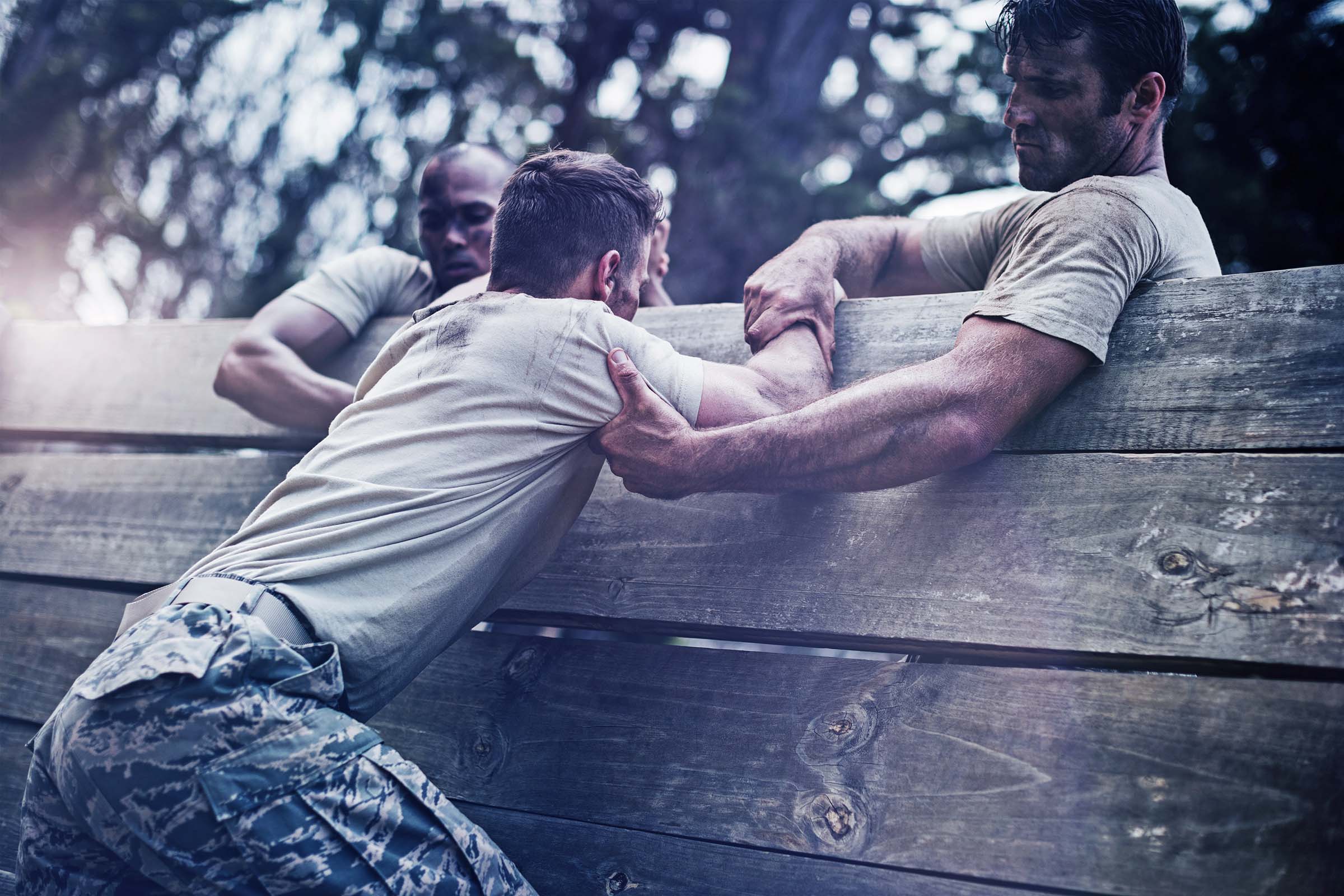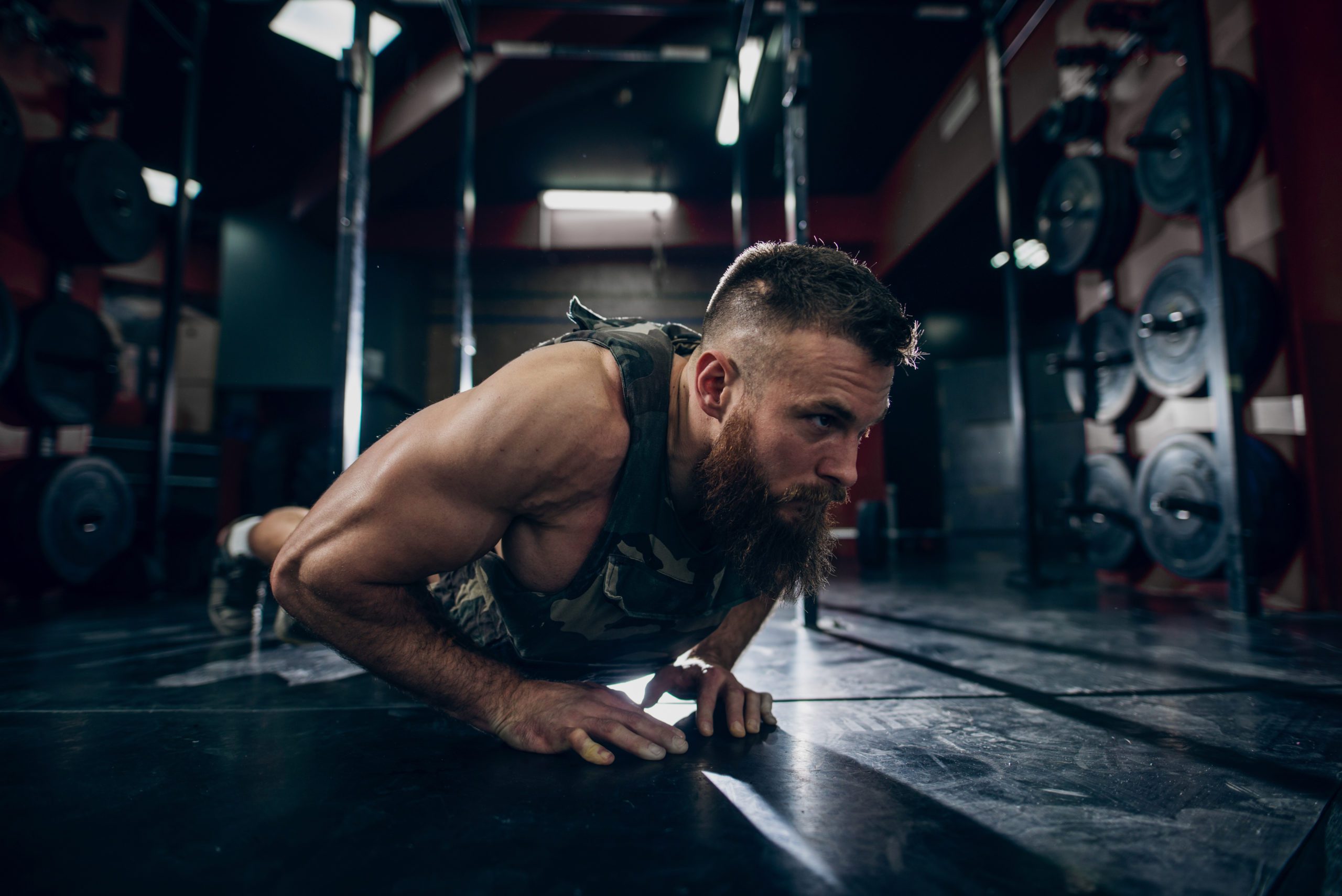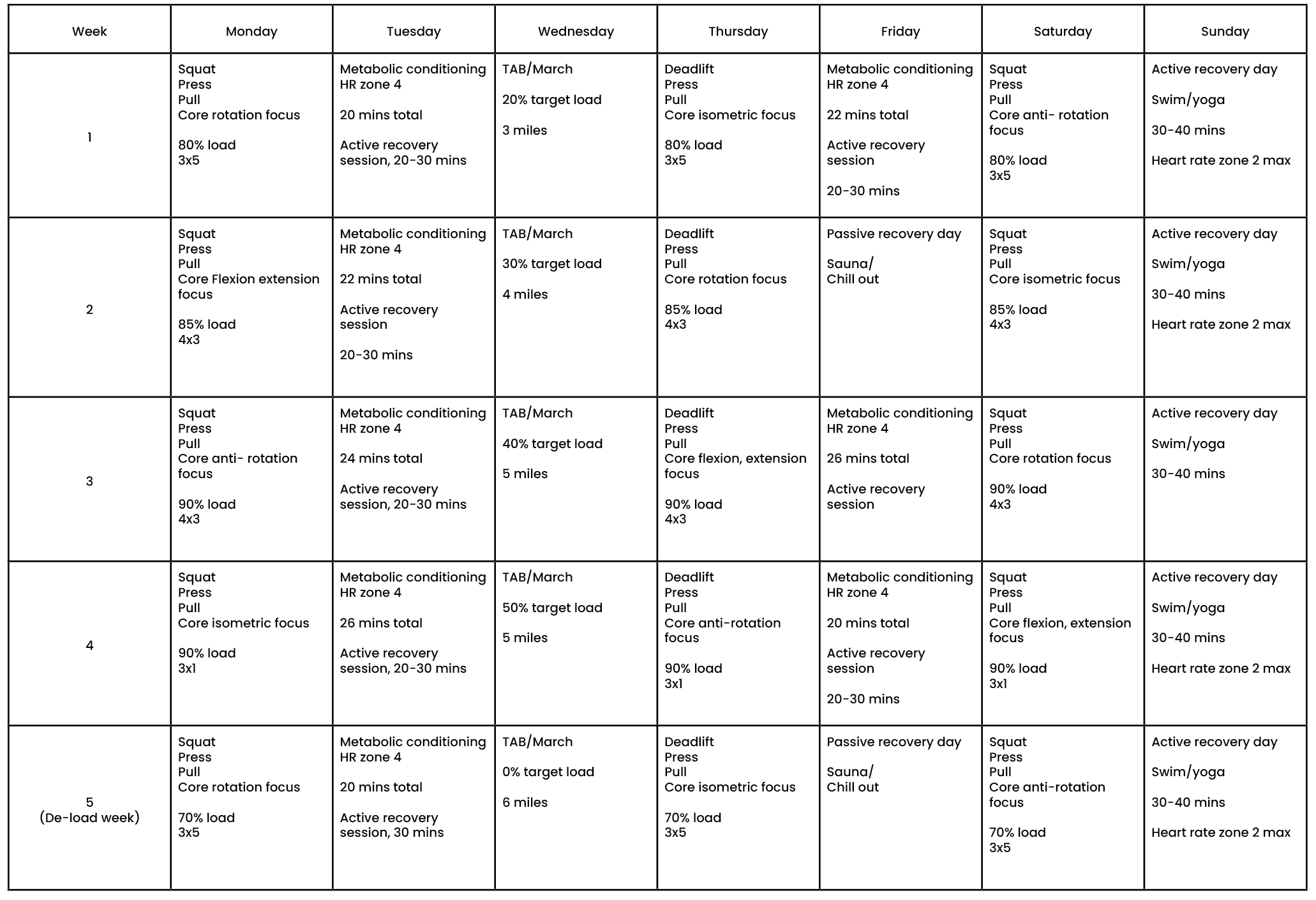Get Military Fit: Training That Goes Beyond the Army Fitness Test

Fred Ormerod is a freelance coach, army reserve medic, nurse, masters student, and masseuse. He’s spent a decade working in healthcare and five years coaching in one of Edinburgh’s leading training facilities. In this article, he tells how you structure your training to prevent injury, build strength, select exercises, and program a plan that will ultimately prepare you for the military.
Fred Ormerod


The Modern Soldier is Changing
Pre-Afghan, the average load carried by an infantry soldier was roughly 30kg. Post, it is reportedly in the realms of 40-45kg. One sergeant I work with swears he weighed himself with and without kit in Afghanistan, and the difference was “only a hair off 100kg.” Even considering how much soldiers are known to exaggerate, this isn’t unthinkable given the ammunition, radio, batteries, 48-hour rations, med-packs, weapon systems, grenades etc. that one might be expected to carry on a patrol.
Army Fitness Test Requirements
Each nation’s military has its own fitness tests, which can be divided almost infinitely again depending on job role, regiment, and battalion.
In the UK, we have the AFT (Army Fitness Test), which is thankfully being played around with and phased out to something that more holistically prepares soldiers. (The US is currently implementing the Army Combat Fitness test, which includes deadlifts, standing power throws, hand-release push ups, sprint-drag-carry, planks, and a 2 mile run). The Army Fitness Test in the UK test consists of push ups, sit ups, and a 1.5 mile run, which is a good way to measure your strength-endurance and aerobic fitness. While this isn’t necessarily a bad thing, it doesn’t always determine the strength you need to be successful in your specific role.
For now, you’ll still need to pass this slightly arbitrary test if you’re looking to join the military. However, the requirement for a soldier to be and remain functional in their role outweighs specific tests. This means you’ll need to mentally and physically prepare beyond the AFT.
You Work too Hard to Not See Progress
Find Your Perfect Training Plan
Options for Every Goal
Training plans from real coaches covering any goal, fitness level, and number of sessions per week.
The Best Coaches
Get coached by the best. Olympians, ex-NFL stars, Titan Games Winners, Sport Scientists and more.
Starting at $1/ day
With many options including a free 7 day trial, you can try out programming before you commit.
Your Training Should Reflect Your Role
When I went through training, it surprised me to find soldiers who could not carry their basic living kit let alone a friend out of a hot situation. Although they usually flew around a 1.5-mile test minutes faster than me, their ability to perform loaded tasks such as a march or drag were severely impacted by simply not being strong enough. Ironically, if they trained to be stronger they’d likely improve their speed as well.
Reducing Preventable Injuries
As loads and intensity increase, so do the chances of injury. Your training needs to reflect the demands of your muscles, ligaments, and tendons in a military setting.
Longevity and consistency are a big part of the game when it comes to military training. In a recent study presented to the National Strength and Conditioning Association, thousands of active soldiers were deemed unfit for deployment, making them especially injury-prone.
The good news is that you can avoid most injuries and niggles by simply increasing strength. For example, a soldier with a back squat of 1.5-2x bodyweight is significantly less likely to get injured while training. Other simple exercises like pull ups, push ups, and deadlifts will definitely lessen your chances of injury as well.
Injury and Loaded Marches
There’s a good amount of literature out there about the risks associated with loaded marching. It would be a miracle to make it through a military career without having to put some significant miles through your boots.
Shin splints, twisted ankles, and lower back pain are but a few of the common injuries associated with what we in the British army call a TAB (tactical advance to battle) or YOMP (you’ll have to ask a Royal Marine why they call it that). Research shows that the best way to improve your chances of avoiding injury is by conservatively and progressively increasing the load and distance of a march/hike/run.
Level Up Your Training
With TrainHeroic’s immersive training app
TrainHeroic does everything you wish your old gym notebook could do.
Take the guesswork out of training with built-in exercise instruction and basic training programs. Compete against yourself and others. Track your performance and readiness. Smash your goals.

How to Train for Military Strength
Train. Simply put, incorporating any kind of strength training with sufficient stimulus will make you stronger over a period of time. The difficulty comes in how to do this.
Given that your job likely includes a certain amount of training anyway, recovery can become an issue. Making sure the proper stimulus for strength increases can also be tricky in a military setting, especially when you’re clinging onto principles of building hardiness through volume.
Functional Exercise Selection
To be a complete soldier, you have to be a complete athlete. Many of the best soldiers I know compete in sports. At a basic level, any athlete should be able to squat, hinge, push, pull and perform ballistic and locomotive exercises.
Some people include Olympic lifts as a standard. While I would say this is definitely not wrong, I would be inclined to incorporate these into metabolic conditioning sessions at lighter weights at first to practice the skill element, or devote short sessions to them on their own.
Olympic lifts are highly technical and take time to learn. Breaking them down into their derivatives (e.g. jump shrugs, mid-thigh pulls, power cleans, high pulls) is effective enough for increasing power output in athletes.
I suggest keeping training simple. By sticking to heavier compound movements (the big four lifts: squat, bench press, deadlift and military/shoulder press), you’ll detract less from any other training you’ll do outside of the suggested program. This will also give you the most bang for your buck in terms of time spent at the gym.
Core stability and strength is greatly associated with reduction in injuries, and it will improve your overall strength as an athlete. A combination of core flexion, extension, rotation, anti-rotation and isometric exercises should be included.
Coach’s Tip: Check out this article for a list of great rotation and anti-rotation core exercises:
5 Exercises Every Athlete Should Do More
Resilience Training
An integral part of strength and conditioning for the military is resilience training. Endurance sports lend themselves to this nicely. Loaded marches are the obvious choice for most soldiers to push themselves mentally. Steeplechases and “9 milers” are notorious for their brutal pace and vomit-inducing terrain here in the UK.
Strength training plays a role here, too (as anyone who has ever been stuck at the bottom of “the hole” in a squat will tell you). If an athlete meets a high strength standard for one rep max (for example, training for a 227kg back squat), it also attests to their long-term perseverance toward training consistently.

4-Week Military Training Program Sample
In the military, you’ll never be fit or strong enough. Should the day come that a human is strong and fast enough to outrun a flying bullet and stop a tank in its path, then I’ll happily retract that statement. Until then, anything and everything you do to improve your fitness will contribute to making you a better soldier or specialist.
Below you’ll find a suggested simple training program split that incorporates strength and endurance for loaded marching, around which you can build a program for yourself. (To download the plan, click here)

Want Training Tips, Exercise Guides & Knowledge Bombs Sent to Your Inbox?
Sign up for the FitNerd newsletter from TrainHeroic
Related articles
3 Ways to Improve Mobility Without Stretching
Are you still trying the endless foam rolling and stretching exercises to get that deep squat position? We know how important mobility is for great, or even GOOD performance. All professional athletes have some comfortability in end ranges of motion. So, what else do...
The Ultimate Guide to Lunges: Queen of all Glute Exercises
Your glutes are the largest muscle group in your body. They’re responsible for almost everything your legs do—walking, running, jumping, squatting, lunging, and just standing upright. As far as moving through space goes, strong glutes are the bedrock of overall...
A Beginner’s Guide to Steel Mace Training
Author: Jesse Grund
Mace training will make you a better mover without it’s not confining you to a fixed space or predetermined range of motion. Second, it’s an offset load with 80 to 90 percent of the weight in the head. You’re also constantly having to resist rotation, which creates greater core engagement.

Join the community
Sign up for the latest training news and updates from TrainHeroic

About TrainHeroic
Support
Made with love, sweat, protein isolate and hard work in Denver, CO
© 2022 TrainHeroic, Inc. All rights reserved.





